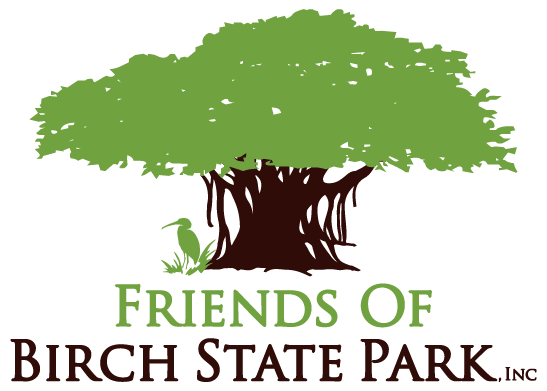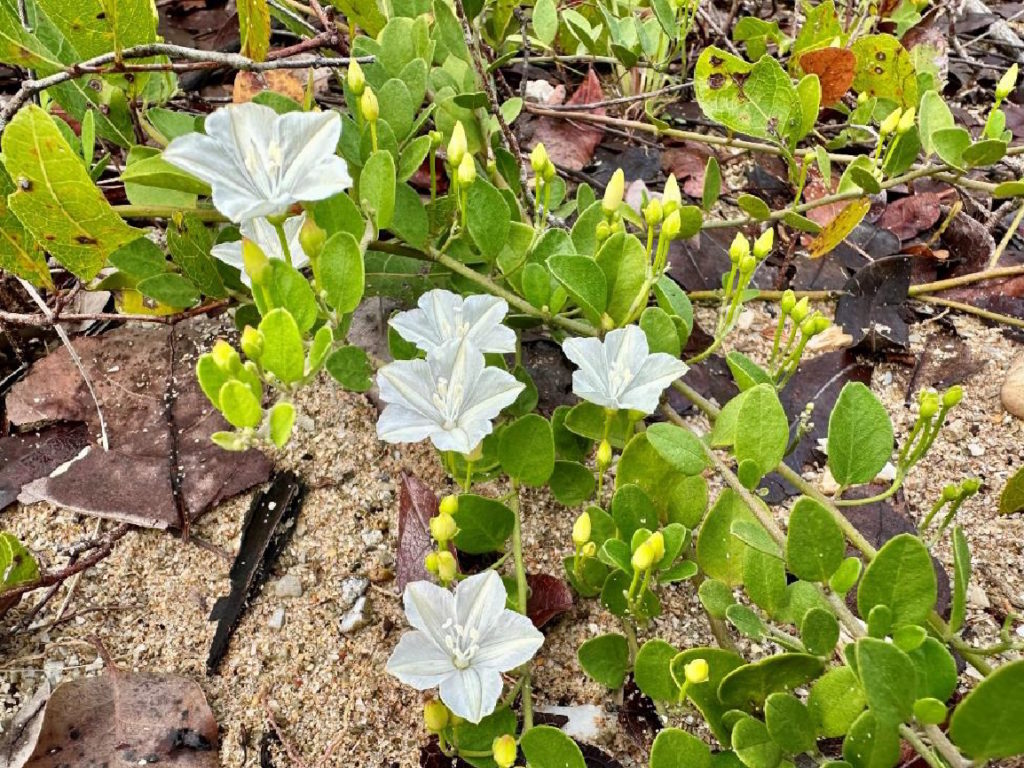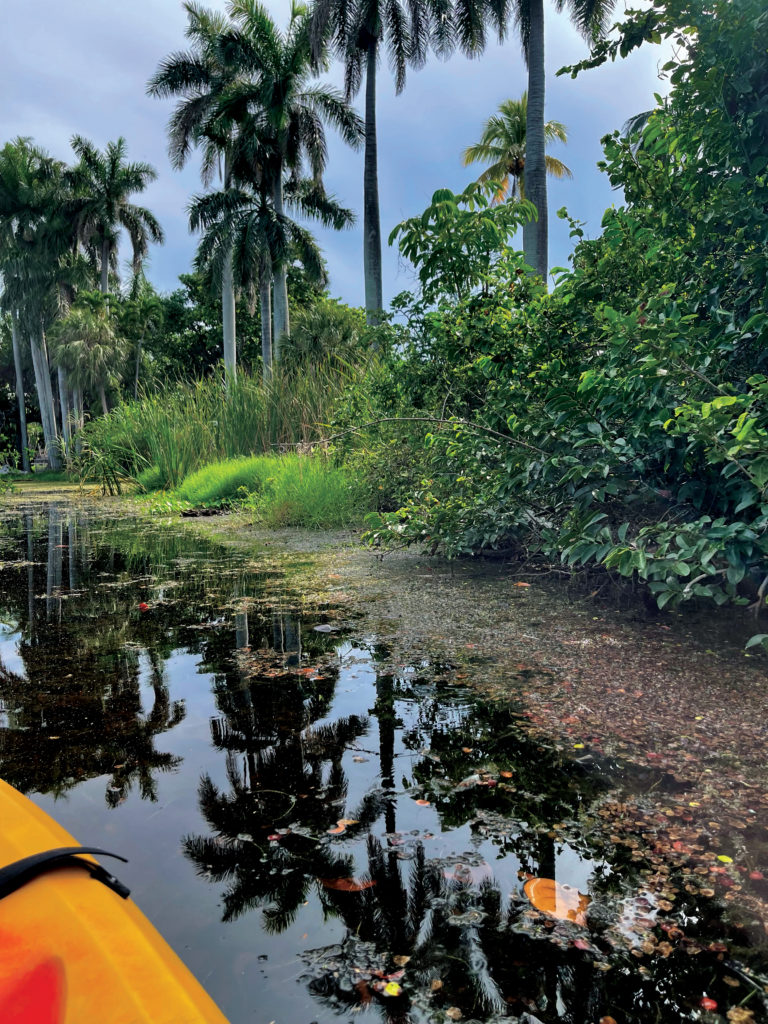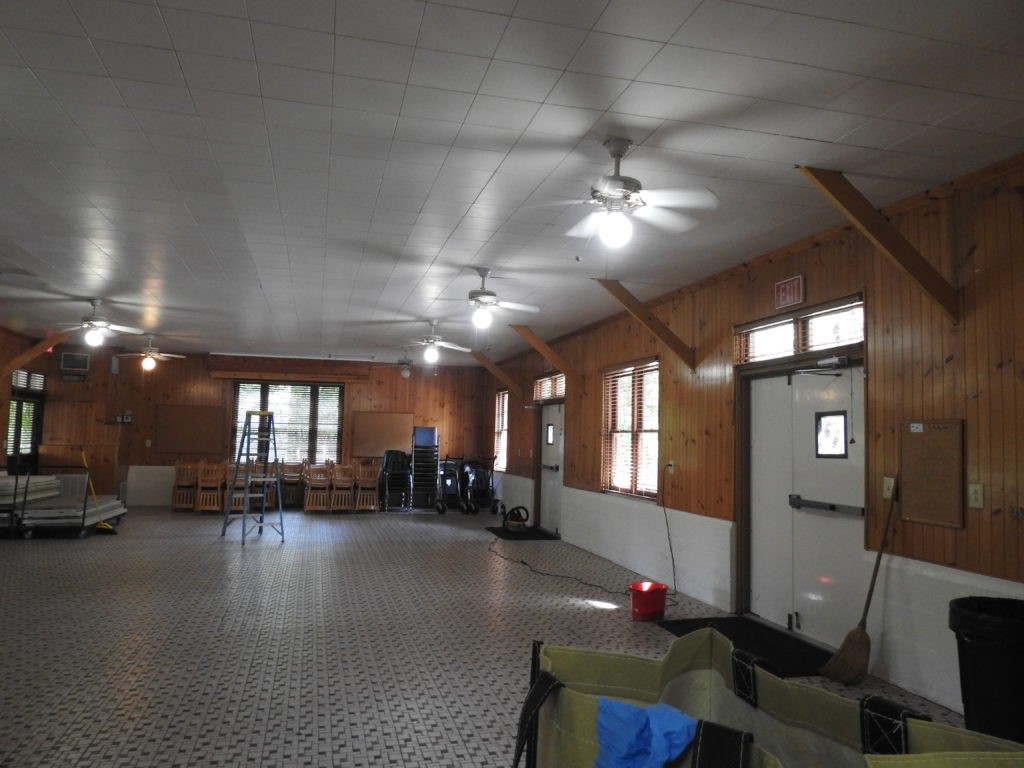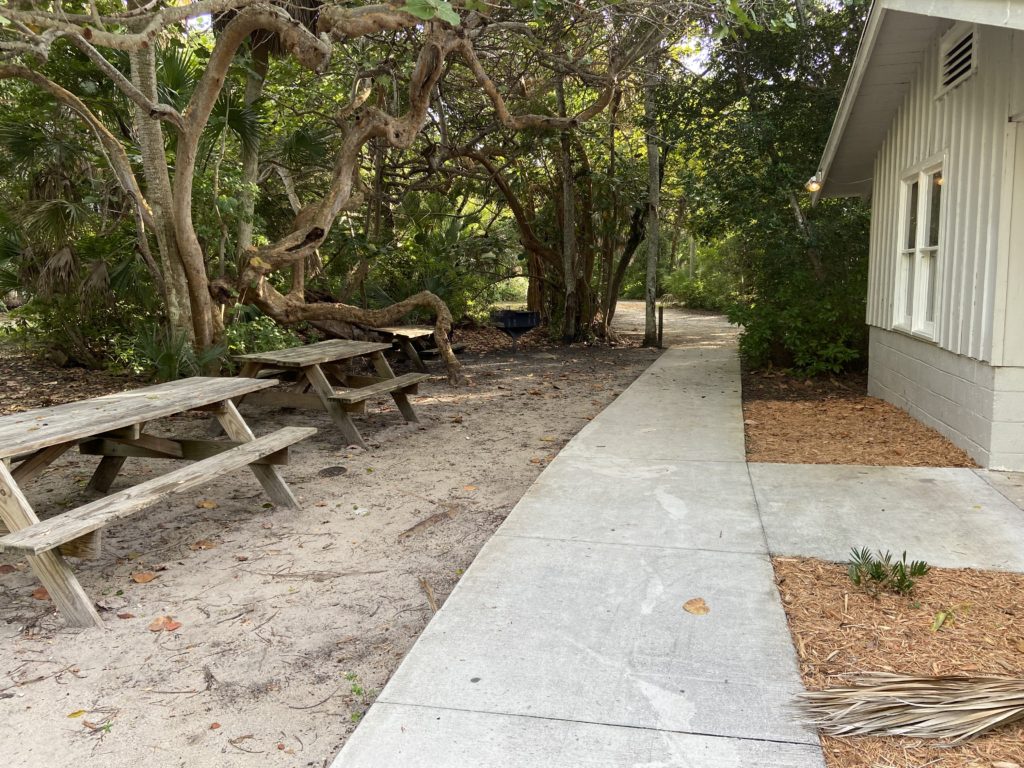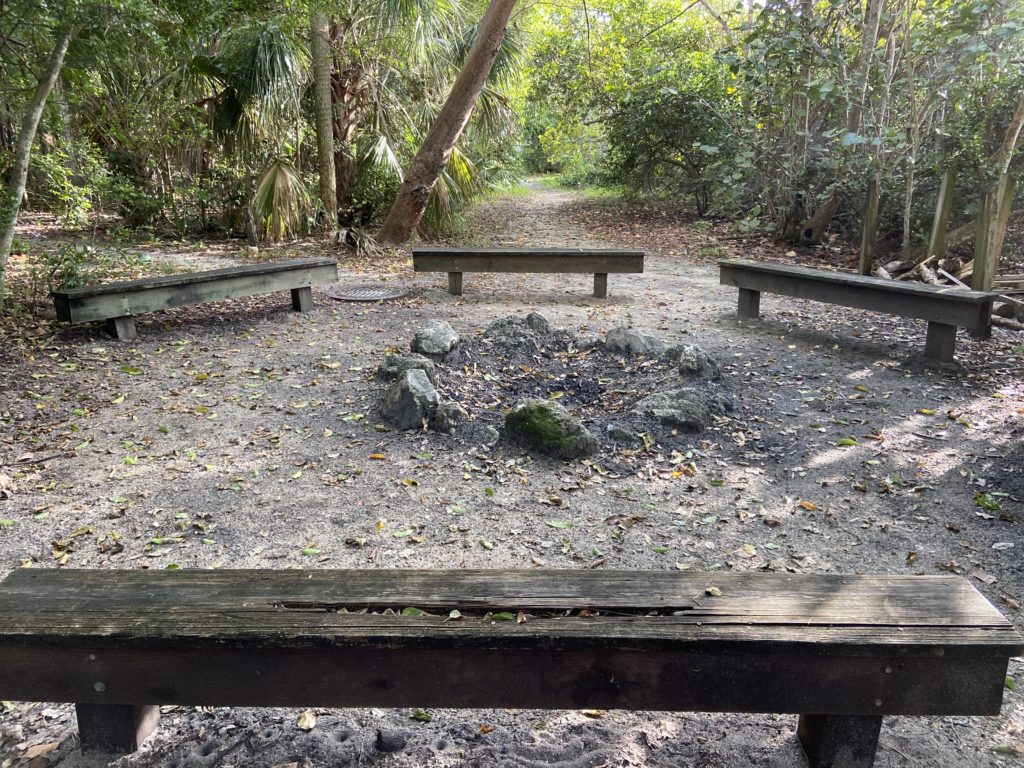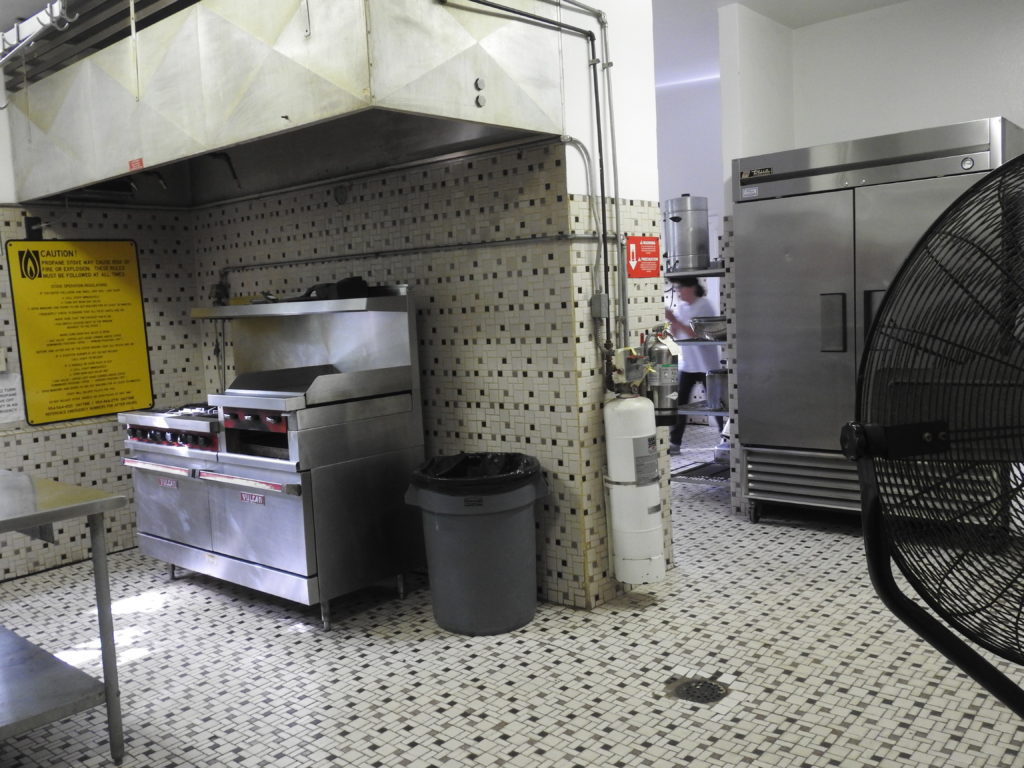To support these projects around the Birch State Park, please Donate to support Friends of Birch State Park.
Beach Jacquemontia Restoration at Birch State Park
Jacquemontia reclinata (hereafter “beach jacquemontia”) is a long-lived, federally endangered trailing vine endemic to the coastal dune and coastal strand plant communities on barrier islands of southeast Florida. Rapid and widespread development of these communities has led to a massive reduction in available habitat, threatening the species with extinction. Fairchild Gardens has worked closely on the recovery of beach jacquemontia since the 1980s, with efforts including monitoring, translocations and reintroductions throughout its historical range. Over the past three decades, at almost all populations, we have observed widespread encroachment of both native and non-native woody species that threatens the long-term survival of beach jacquemontia and associated species.
Funding from the USFWS Coastal Program has allowed Fairchild Gardens to focus on beach jacquemontia habitat restoration, working with land managers and partners like The Institute for Regional Conservation (IRC) to develop and implement long-term management strategies. Restoration of appropriate coastal habitat and maintenance of existing suitable habitat are vital to the survival of extant wild and reintroduced populations.
Previous evaluations of the wild beach jacquemontia population at Hugh Taylor Birch State Park showed a declining trend, with only 18 plants observed in late 2021 (from 97 plants in 2000). Fairchild GIS records as well as publicly available aerial photos show decreasing population footprint and available habitat from 1995 to today. By 2023, the beach jacquemontia habitat was reduced to a small “room” of less than one tenth of an acre, walled-off by native and non-native hardwoods. Over the past decade, Fairchild Gardens made management recommendations to park staff which included hardwood reduction (primarily sea grape, poisonwood, oak), to open up additional habitat for the population.
In December of 2023 Fairchild Gardens with a team of biologists began the restoration process. In the coming year, Fairchild will continue working with contractors and Park staff to conduct hardwood reduction and removal in the historic footprint of the species. This will expand the space available for the remaining plants and allow the population to expand back into areas it historically occupied. This area doubles as a gopher tortoise preserve. It is likely that the tortoises would also benefit from more open, sunny habitat that could support herbaceous plants that make up much of their diet.
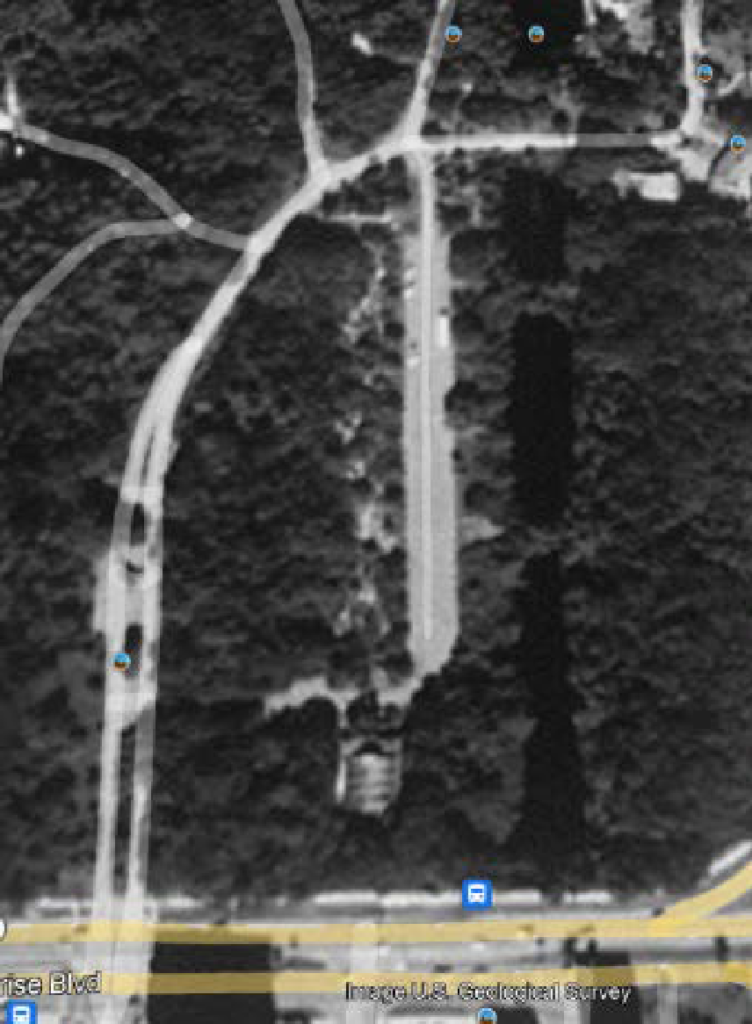

the parking lot is visibly open with sandy gaps. Right, the same area in 2023, with closed-in canopy.
The photo shows the extent of beach jacquemontia mapped by Fairchild in 2000, which is also the
proposed area for habitat restoration in Year 5. The yellow circle shows where beach jacquemontia
plants are currently present.
Long Lake Clean Out – Phase 3
Hugh Taylor Birch State Park’s Long Lake is part of a freshwater coastal dune lake system that once spanned nine miles along the coast of southeast Florida. These coastal dune freshwater lakes formed over many centuries as a barrier island. As development occurred, much of the stretch was filled in and/or broken up into a series of smaller lakes as roadways or trail-ways were installed. Over time, these lakes formed silt bottoms as aquatic plant life dropped their leafy matter and it decayed, becoming an impermeable barrier against saltwater intrusion from the adjacent Atlantic Ocean.
In 2016 and 2018, with help from the Community Foundation of Broward, other private donations, Broward County and the City of Fort Lauderdale, the Friends engaged in two phases of mechanical clean out of the lake. In the first phase, invasive plant species were removed from the lake along with four feet of muck. The nearly one-mile lake became navigable once again for kayaks, canoes, paddleboards and pedal boats. Additionally, the result of removing cattails, non-indigenous vegetation and debris provided a vital habit for our native local plant and wildlife. In phase two, laborers spent 200 man-hours removing debris from the impassable and debris-clogged 800-foot moat that runs along the eastern side of the park’s coastal dune lake. Approximately one-foot deep of debris was removed from the 12′-wide moat and was stacked along the sides of the moat (an estimated 28,800 square feet of debris was collected). Volunteers from local Corporations assisted in gathering debris and placing it in dumpsters. Once the top layer of debris was removed, a licensed contractor spent 4 weeks using a suction pump to remove 2 to 3 feet of muck from the floor of the moat. It was pumped into porous nylon bags where it drained. It was subsequently repurposed as fill dirt within the park, creating a mangrove rehabilitation area in the northern section of the park.
Phase 3 is underway thanks to funding from the Community Foundation of Broward and Bank of America. This phase is addressing the North end of Long Lake. This area has yet to be touched and remains inaccessible to canoes and kayaks. The lack of accessibility also affects the monthly maintenance to the lake, leaving areas untreated. Beginning in April 2023, crews from Organic Sediment Removal Systems (OSR) will begin by removing years’ worth of sediment build up from the bottom of the lake into a “muck” bag using a series of pumps and hoses. This organic material accumulates over decades, restricting water levels and changing the natural properties of the ecosystem. The muck bags will be placed in a field by the Manatee Pavilion. The sediment tends to dry quickly in South Florida due to our porous sediment and our warm climate; we predict it needing 3-6 months. To comply with environmental policies and standards, the sediment must be soil tested after it dries to determine where it can be spread. Soil can contain a variety of compounds that may or may not allow it to be left on site.
For more information on how you can help, contact Michelle Schmitz at 954-566-0660 or mschmitz@birchstatepark.org.
To donate towards further restoration efforts, click here.
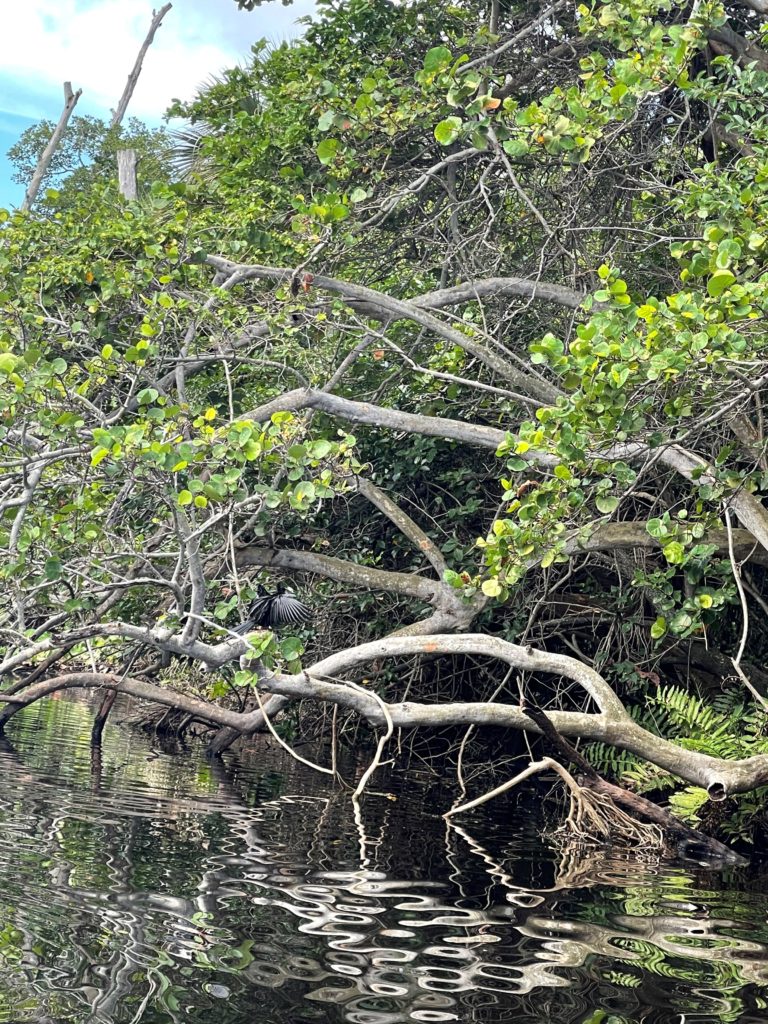
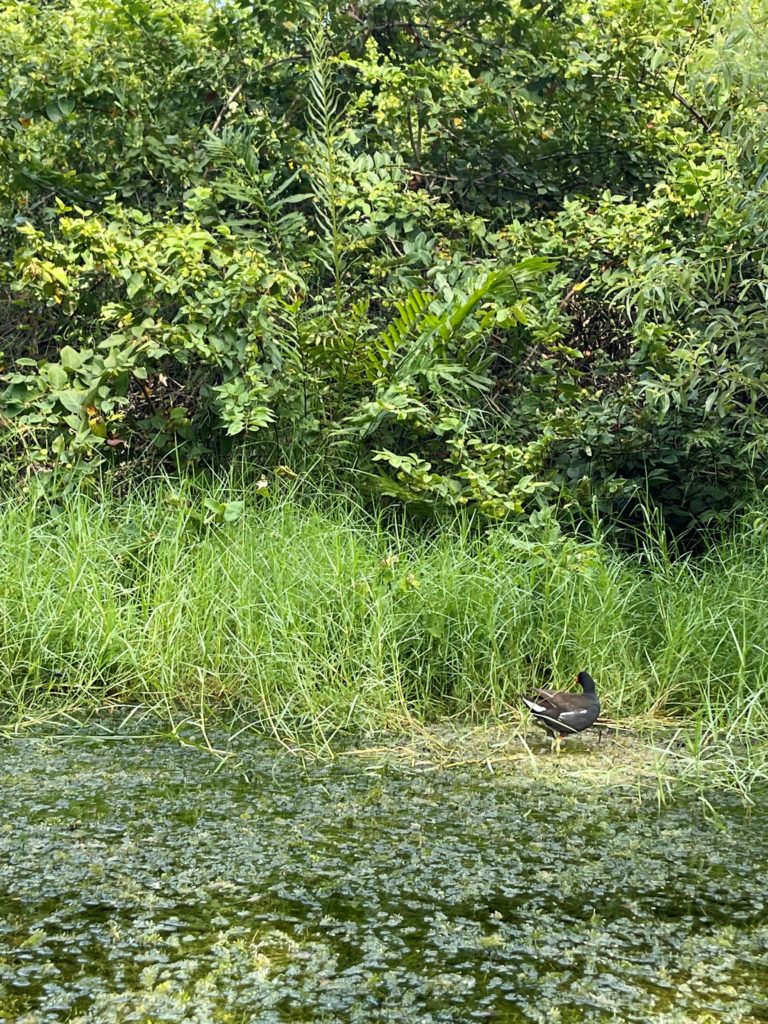
Improvements to Elks’ Youth Camp
The Elks’ Youth Camp was dedicated in 1949 as a gift to the youth of our community by the Elks organization. The facility includes 6 cabins that sleep 68 youth total and a dining hall with a kitchen. The camp can be rented for a nominal fee to non-profit organizations that serve youth. We will also repurpose the 7th cabin, now used for storage into an outdoor education classroom with facilities for experiments
Replace all cabin and dining room windows – $100,000
Replace all 6 cabin AC units – $25,000
Refurbish camp dining hall – $25,000
Retrofit kitchen to code (new appliances, facilities and modification to roof) – $100,000
Outdoor education classroom – $100,000
Project: $350,000
Naming opportunities available
For more information contact Michelle Schmitz at mschmitz@birchstatepark.org or 954-566-0660.
Park Perimeter Fence
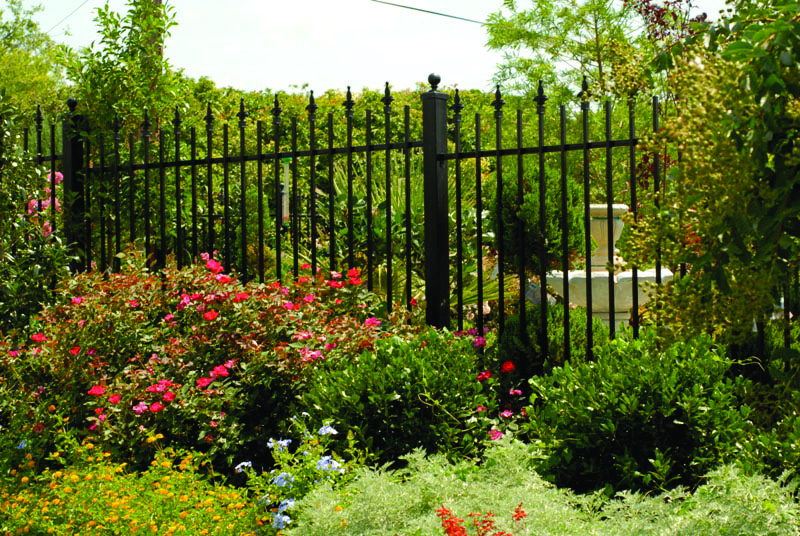
The old, rusted chain-link fence that currently surrounds the park is constantly breached by vagants. It is a security issue as well as an aesthetic eyesore. A seven-foot-high fence running 1,360 feet long made of rust-proof aluminum, painted black to resemble wrought iron (to match the Bonnet House fence) would not only secure the park but add to the appearance as well.
Project: $150,000
For more information contact Michelle Schmitz at mschmitz@birchstatepark.org or 954-566-0660.
Mangrove Walkway

The trail into the mangrove floods when it rains and during high tides, making the trail unusable. We plan to build an elevated walkway in the mangrove area so that there is no down time for trail users. We also plan to maintenance the mangroves to make them better accessible by park staff and visitors.
Wood-like permanent walkway – $150,000
Mangrove maintenance – $50,000
Project: $200,000
For more information contact Michelle Schmitz at mschmitz@birchstatepark.org or 954-566-0660.
Trackless Tram Educational Park Tours
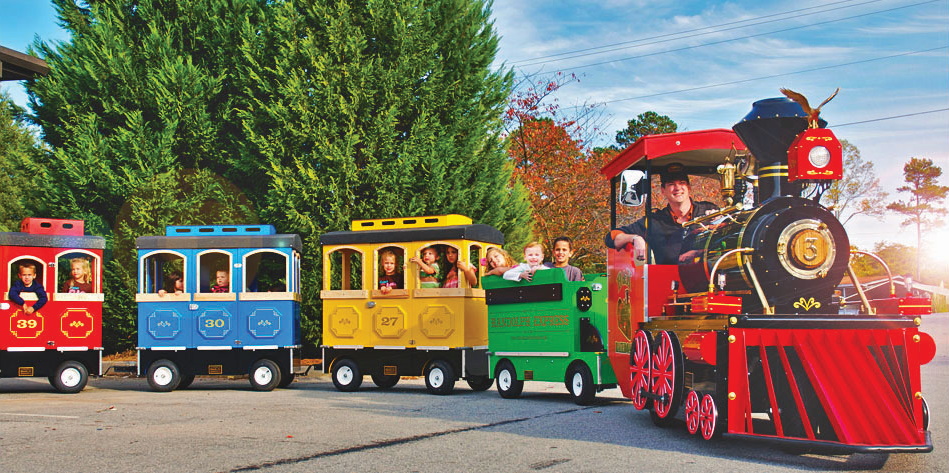
Program: Ranger-Guided Educational Park Tour using Trackless Tram
During the Park’s heyday, from the mid-60s to the mid-80s, a sightseeing train took visitors around the park trails in a three-mile loop. Our plan is to offer a ranger-guided tour on a trackless tram, that looks like a train, for children to learn about the park’s history and natural habitat. There will be a nominal fee for the ride and the program can be sponsored by one or more sponsors. The tram will stop at the Live Animal Program and a playground.
Call for Details
Sponsorship of Trackless Tram Program will be available by month, season or an annual basis.
For more information contact Michelle Schmitz at mschmitz@birchstatepark.org or 954-566-0660.



